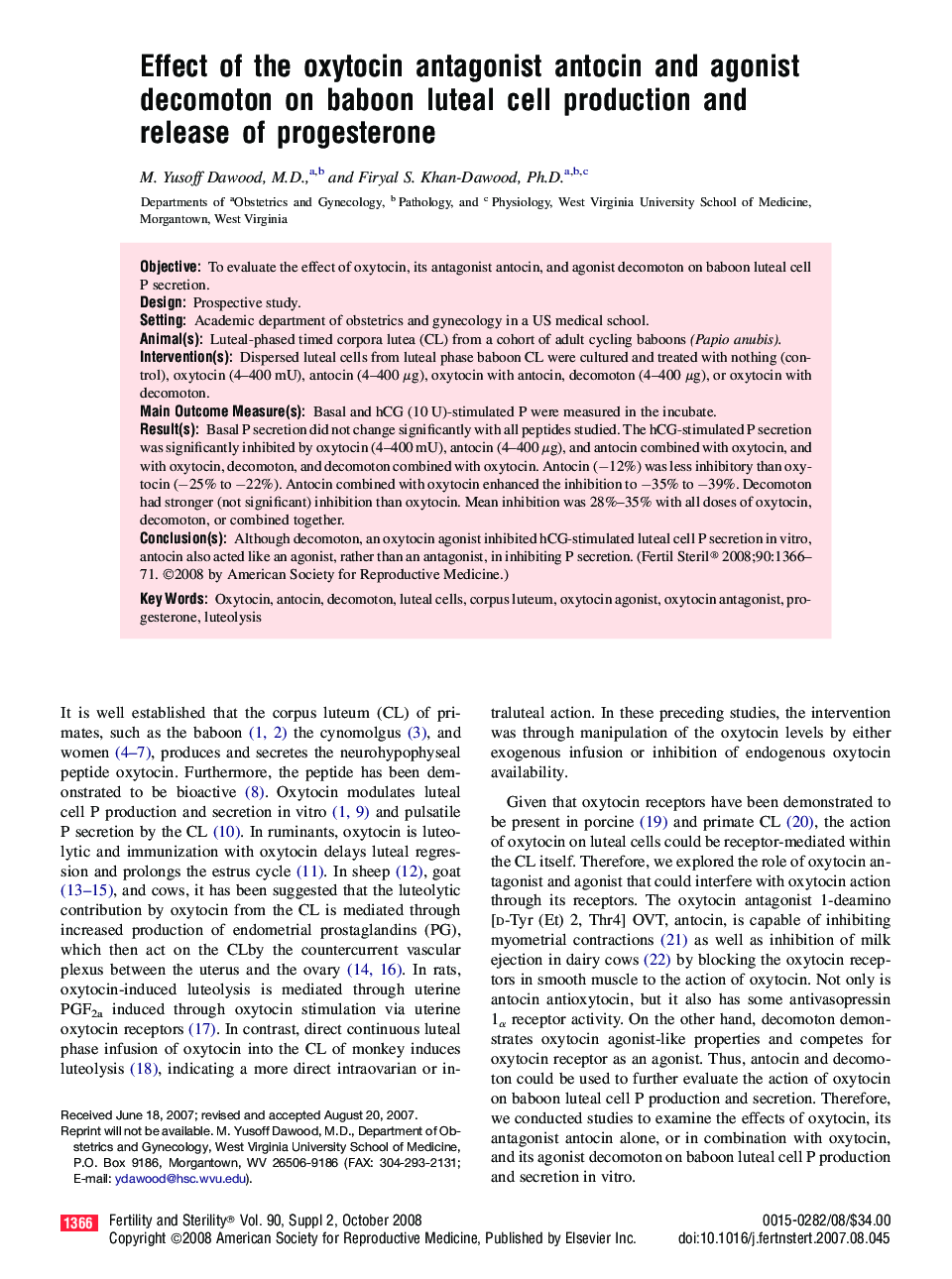| Article ID | Journal | Published Year | Pages | File Type |
|---|---|---|---|---|
| 3939066 | Fertility and Sterility | 2008 | 6 Pages |
ObjectiveTo evaluate the effect of oxytocin, its antagonist antocin, and agonist decomoton on baboon luteal cell P secretion.DesignProspective study.SettingAcademic department of obstetrics and gynecology in a US medical school.Animal(s)Luteal-phased timed corpora lutea (CL) from a cohort of adult cycling baboons (Papio anubis).Intervention(s)Dispersed luteal cells from luteal phase baboon CL were cultured and treated with nothing (control), oxytocin (4–400 mU), antocin (4–400 μg), oxytocin with antocin, decomoton (4–400 μg), or oxytocin with decomoton.Main Outcome Measure(s)Basal and hCG (10 U)-stimulated P were measured in the incubate.Result(s)Basal P secretion did not change significantly with all peptides studied. The hCG-stimulated P secretion was significantly inhibited by oxytocin (4–400 mU), antocin (4–400 μg), and antocin combined with oxytocin, and with oxytocin, decomoton, and decomoton combined with oxytocin. Antocin (−12%) was less inhibitory than oxytocin (−25% to −22%). Antocin combined with oxytocin enhanced the inhibition to −35% to −39%. Decomoton had stronger (not significant) inhibition than oxytocin. Mean inhibition was 28%–35% with all doses of oxytocin, decomoton, or combined together.Conclusion(s)Although decomoton, an oxytocin agonist inhibited hCG-stimulated luteal cell P secretion in vitro, antocin also acted like an agonist, rather than an antagonist, in inhibiting P secretion.
